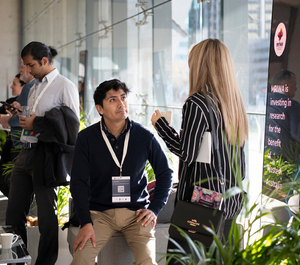Mineral Carbonation
Western Australia has the potential to sequester more emissions than it produces.
The Challenge
Increasing the rate of direct air capture and the rate of reaction via mineral carbonation to enable cost effective rapid, large-scale CO2 sequestration.
The widespread, industrial-scale utilisation of mineral carbonation has enormous potential to sequester CO2 emissions, but is inhibited by technological and economic challenges.
Context
The goal of the 2015 Paris Agreement is to limit global warming to well below 2, preferably to 1.5 degrees Celsius, compared to pre-industrial levels.
To achieve this long-term temperature goal will require not only global peaking of greenhouse gas emissions as soon as possible [1] but will also require the removal of carbon dioxide (CO2) [2].
Mineral carbonation, one form of carbon capture, use and storage (CCUS), has the potential to be a versatile approach to both remove and permanently store carbon dioxide at the gigatonne scale while also providing strategic economic advantage to quickly transition Western Australia to a low carbon economy supporting global low carbon supply chains.
The best types of materials for mineral carbonation are those rich in the metals calcium, magnesium and iron. Mafic and ultramafic rocks found within Western Australia’s prolific greenstone belts are particularly rich in magnesium and calcium-rich minerals, hence are particularly prospective for mineral carbonation [3].
Calcium, magnesium and iron rich solids which may be suitable for mineral carbonation are also present in many industrial wastes, including (but not limited to):
- Existing mine tailings and wastes from across Western Australia’s mining sector (e.g. from processing nickel, diamond, gold, aluminium or asbestos ores).
- Ash from combustion processes (e.g. coal or biomass fired power stations, waste incinerators).
- Blast furnace slags.
- Cement wastes [4].
Mineral carbonation combined with direct air capture (DAC) provides added opportunity for Western Australia.
[1] https://unfccc.int/process-and-meetings/the-paris-agreement/the-paris-agreement
[2] https://www.iea.org/reports/ccus-in-clean-energy-transitions
[3] Communique from DMIRS
[4] Communique from DMIRS
Roadmap to Decarbonise WA Through Integrated Mineral Carbonation
Curtin University has been engaged to develop a roadmap for adopting mineral carbonation as a large-scale CO2 capture and sequestration process.
For this road map to be effective it needs to encompass not only the scientific and engineering aspects but should also include business case development and policy making.
To achieve this overall objective four key objectives will be achieved in this project:
Objective 1 Technology overview and mapping:
A thorough literature review of all technology for mineral carbonation and then mapping it against potential use cases in Western Australia.
Objective 2 Scientific Road Map:
Identification of short, medium and long-term scientific goals that need to be achieved to support the implementation of Mineral carbonation a large scale in an industrial setting.
Objective 3 Business case:
Developing economic models for various use cases particularly relevant to Western Australia, undertaking sensitivity analysis and simulation.
Objective 4 Policy making:
Identification of necessary guidelines and policy suggestions for embedded emissions sequestration, offset credit validation and trading authorisations.
Further work will then consider mechanisms to progress areas of research need.
Get involved

Apply for Funding
Talk to us about available research funding opportunities for your mineral carbonation projects.


Join the Conversation
Sign up to receive the latest news and updates from MRIWA direct to your inbox.
Page was last reviewed 8 July 2024
